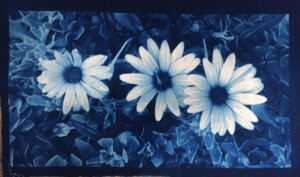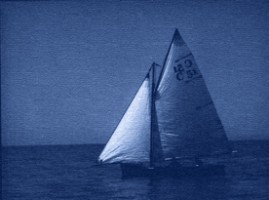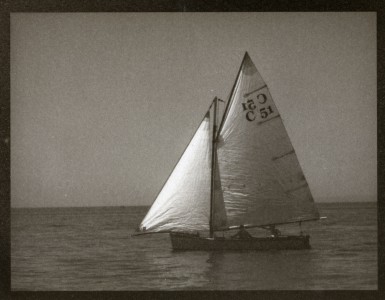| Details | Price | Qty |
|---|---|---|
| Cyanotype & VDB on Fabric | $450.00 AUD | Sold Out |
"Cyanotype and Vandyke Brown on Fabric - Ellie Young-1 day" is currently sold out.
Please check back again later, as spots may become available.
-
October 4, 2024
9:30 am - 4:30 pm

PRINTING PHOTOGRAPHS ON FABRIC
The workshop allows you to create photographs on natural fibres, cotton, linen and silk with a surprising clarity. It provides the following advantages over paper:
- Movement – especially silks
- Can be stretched onto a frame
- Wearable – cyanotype can be printed on clothing items.
- Décor – cushion, bed covers and lamp shades
The Danish Royal family Album: Famile Royal D’Angleterre, ca. 1863 was printed on van dyke brown on Silk – see the following link https://eastman.org/fashion-photography-royal-family-album
Cyanotype creates cool blue colours and the Van dyke brown the warm brown colours – a great introduction to two beautiful processes.
ABOUT CYANOTYPE
This process provides an image in stable Prussian blue pigment. Using two simple chemical solutions  combined to apply to the fabric, dry and expose to sunlight under a negative, the photograph just water to develop, there is no need for a darkroom. The image colour may be easily modified by a variety of toning agents.
combined to apply to the fabric, dry and expose to sunlight under a negative, the photograph just water to develop, there is no need for a darkroom. The image colour may be easily modified by a variety of toning agents.
THE CYANOTYPE HISTORY
Sir John Herschel’s traditional cyanotype process, now practiced for 166 years, became known as Blueprint, the first reprographic process. It is one of the oldest, simplest, safest, and cheapest alternative photographic process.
ABOUT VAN DYKE BROWN:

The Van Dyke Brown is similar to the original formula patented by Arndt and Troost in 1895 and based on the first iron-silver process, the argentotype, invented in 1842 by the English astronomer, Sir John Herschel. A photograph is created in beautiful warm brown tones by coating fabric with the light sensitive 3 part solution. Exposure to light changes the light sensitive salts to image forming metallic iron & silver.
Van Dyke Brown is a contact printing process – the negative is the same size as the photograph. This process does not require a darkroom.
This is a hands on workshop where the participants will produce a number of photographs on a range of fabrics. Outline of the day:
1. The negative (includes instructions on creating digital negatives)
2. Fabric choices
3. Coating methods
4. Exposure
5. Processing – (includes toning)
CLASS MAXIMUM 2
All materials supplied including lunch
Starts at 9.30 am and concludes at 4.30 pm
